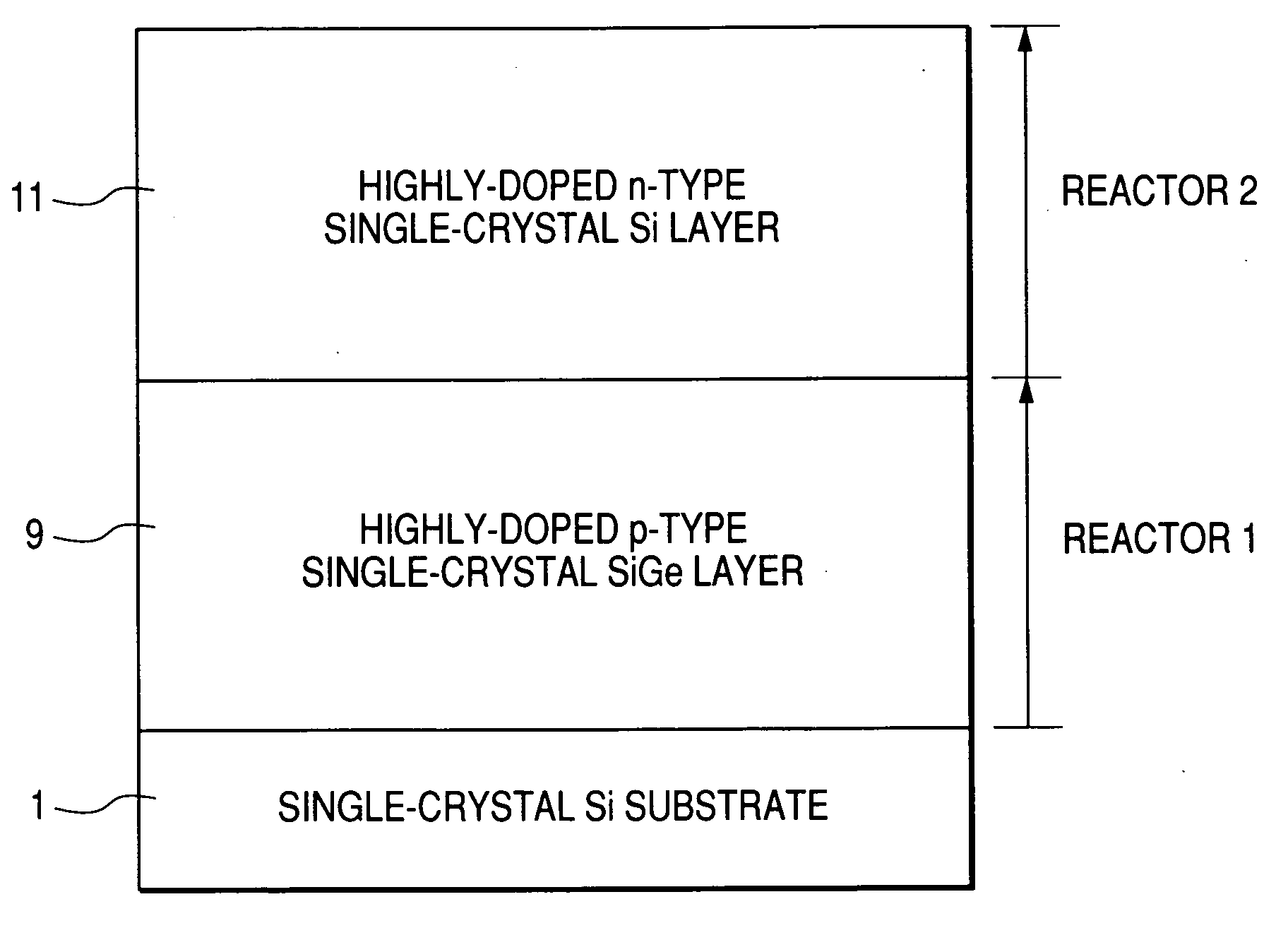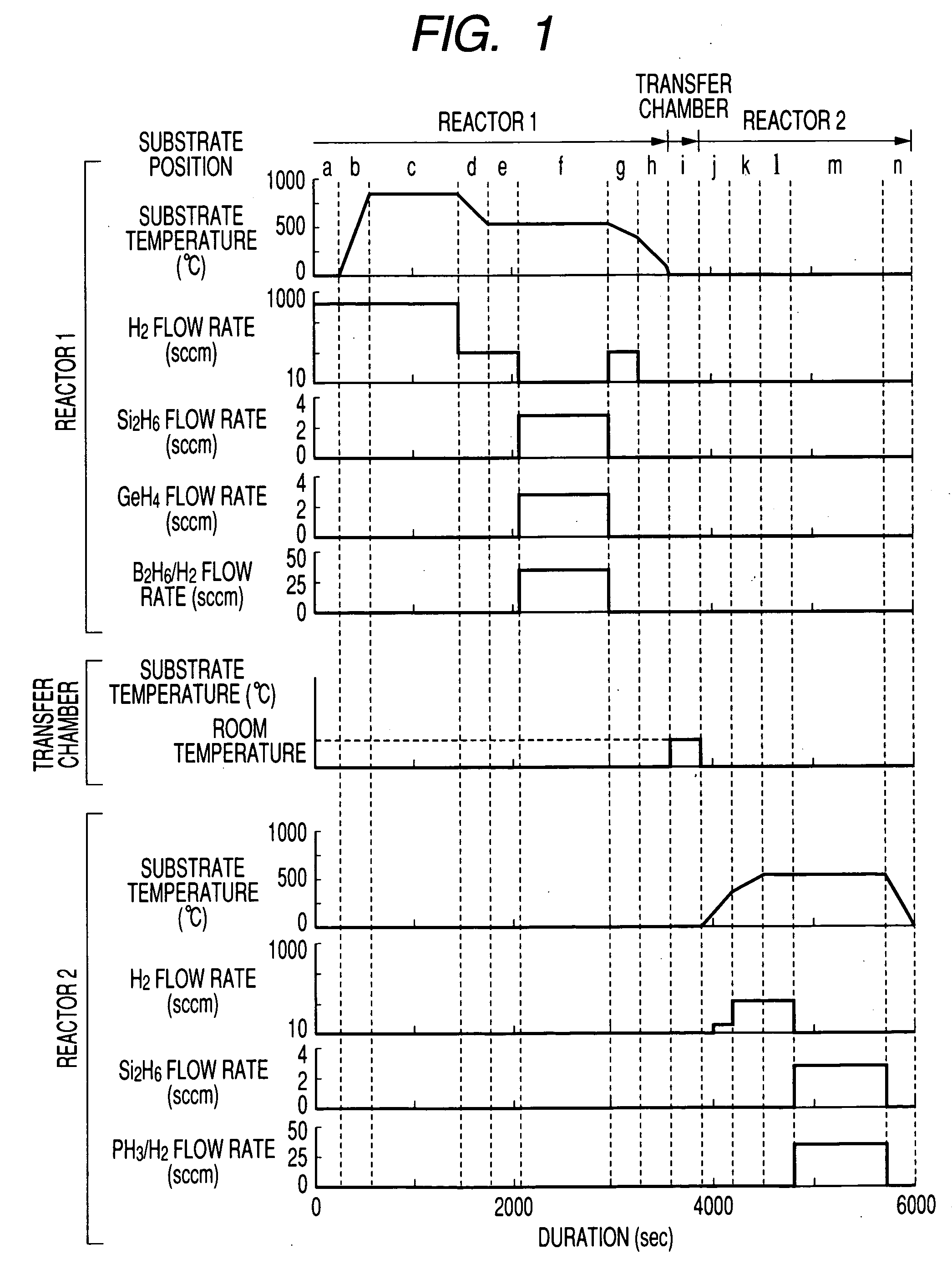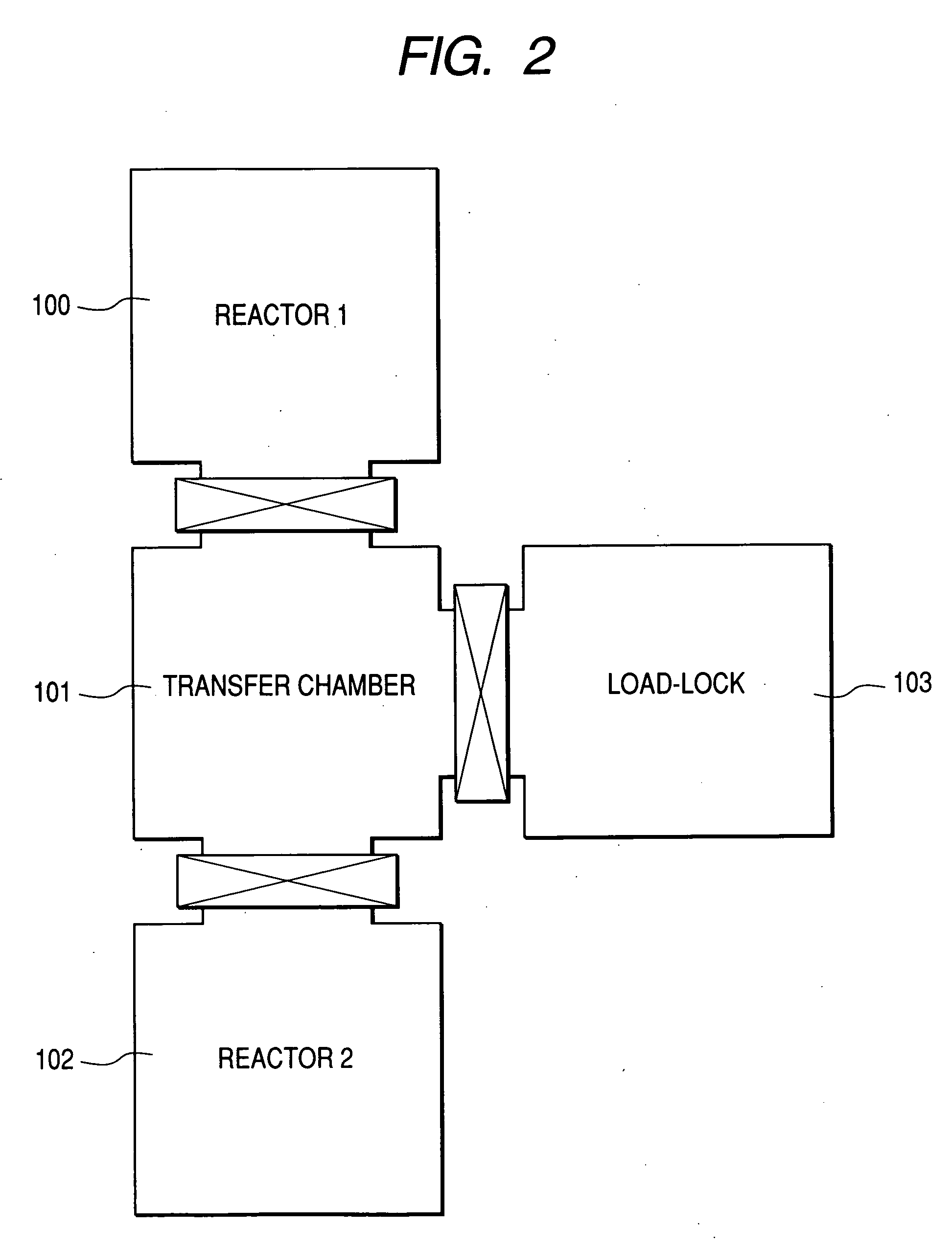Semiconductor device and manufacturing method thereof
a manufacturing method and semiconductor technology, applied in the direction of semiconductor devices, electrical devices, transistors, etc., can solve the problems of crystallinity defects, achieve excellent crystallinity, ensure high-performance semiconductor integrated circuits, and use excellent various characteristics of semiconductor devices
- Summary
- Abstract
- Description
- Claims
- Application Information
AI Technical Summary
Benefits of technology
Problems solved by technology
Method used
Image
Examples
first embodiment
[0055]FIG. 1 is a drawing illustrating a sequence of the first embodiment of the present invention. This shows a sequence to form a multilayer film consisting of a highly-doped p-type single-crystal SiGe layer and a highly-doped n-type single-crystal Si layer on a single-crystal Si substrate. Processes from step g to step l correspond to the second process in the present invention. In step g, the first crystal growth (the first process in the present invention) is completed and the second process starts. Then, hydrogen is supplied until the substrate temperature drops to a predetermined temperature, for instance, in the vicinity of 200° C. (step g). When the substrate temperature drops to the predetermined temperature or lower, the supply of hydrogen is stopped (step h and step i). In step j, the substrate temperature is increased for the purpose of the second crystal growth in the second reactor. In this step j, when the substrate temperature increases to the predetermined temperat...
second embodiment
[0072]FIG. 4 is a drawing illustrating a sequence of the second embodiment of the present invention. FIG. 4 shows a sequence to form a multilayer film consisting of a highly-doped p-type single-crystal SiGe layer 9 and a highly-doped n-type single-crystal Si layer 11 on a single-crystal Si substrate 1. The following points are the differences between the first embodiment and this embodiment. In the first embodiment, a highly-doped n-type single-crystal Si layer was grown in the second reactor on the highly-doped p-type single-crystal SiGe layer 9 grown in the first reactor 100. However, in this embodiment, a highly-doped n-type single-crystal Si layer is also grown in the first reactor 100 in which the highly-doped p-type single-crystal SiGe layer 9 was grown.
[0073] Processes from step g to step l correspond to the second process in the present invention. In step g, the first crystal growth (the first process in the present invention) is completed and the second process starts. The...
third embodiment
[0078]FIG. 6 shows the third embodiment of the present invention. FIG. 6 is a longitudinal section structure of a SiGe HBT. A semiconductor substrate comprising a highly-doped n-type single-crystal Si layer 2 to be a so-called buried layer, an n-type single crystal Si layer 3 to be part of a collector, a first collector / base isolation insulator film 4, a highly-doped n-type single-crystal Si layer 5 to be a collector lead layer, and an isolation insulator film 6, is formed on a Si substrate 1. Then, a second collector / base isolation insulator film 7 is formed on the surface of the substrate except for the parts on which an intrinsic region of the HBT and a collector lead layer are formed. On the n-type single-crystal Si layer 3 exposing the surface, an n-type single-crystal SiGe layer 8 to be a collector, a highly-doped p-type single-crystal SiGe layer 9 to be a base, and a highly-doped n-type single-crystal Si layer 11 to be an emitter are grown in order epitaxially. Moreover, a hi...
PUM
 Login to View More
Login to View More Abstract
Description
Claims
Application Information
 Login to View More
Login to View More - R&D
- Intellectual Property
- Life Sciences
- Materials
- Tech Scout
- Unparalleled Data Quality
- Higher Quality Content
- 60% Fewer Hallucinations
Browse by: Latest US Patents, China's latest patents, Technical Efficacy Thesaurus, Application Domain, Technology Topic, Popular Technical Reports.
© 2025 PatSnap. All rights reserved.Legal|Privacy policy|Modern Slavery Act Transparency Statement|Sitemap|About US| Contact US: help@patsnap.com



